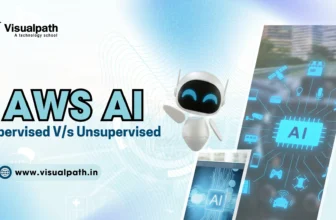
In today’s data-driven world, analytics plays a crucial role in helping organizations make informed decisions. Two key types of analytics dominate the landscape—Predictive Analytics and Descriptive Analytics. While both are essential, they serve different purposes. Understanding their differences is vital for anyone exploring data science courses in Jaipur or aiming to build a career in this field. As more industries integrate data science into their operations, the need for professionals who can leverage both types of analytics is skyrocketing.
Descriptive Analytics: Understanding the Past
Descriptive analytics is the process of summarizing historical data to identify patterns and trends. It provides insight into what has already happened. Businesses use it to generate reports, dashboards, and summaries that help in understanding performance metrics. This form of analysis relies on raw data and converts it into a comprehensible format, making it an excellent starting point for data exploration.
In the context of learning, anyone enrolled in data science courses in Jaipur will encounter descriptive analytics early in their training. It forms the foundation upon which deeper analytical techniques are built. While it doesn’t predict future events, it provides the context required to make better decisions and improve ongoing strategies.
Predictive Analytics: Forecasting What’s Next
Unlike descriptive analytics, predictive analytics focuses on forecasting future outcomes using statistical models and machine learning. It analyzes current and historical data to identify patterns and predict future behaviors or trends. This is particularly useful in areas like customer behavior forecasting, fraud detection, and inventory management.
As part of modern data science institute in Jaipur curricula, predictive analytics is introduced after mastering foundational concepts. It empowers learners to apply algorithms and statistical models that anticipate future scenarios, allowing businesses to take proactive measures rather than reactive ones.
Tools and Techniques Behind Each Approach
Descriptive analytics typically employs tools like Excel, SQL, and data visualization platforms such as Tableau or Power BI. These tools help summarize data and create intuitive visuals. On the other hand, predictive analytics uses more advanced tools and languages like Python, R, and machine learning libraries such as scikit-learn and TensorFlow.
Students pursuing data science courses in Jaipur will gain hands-on experience with these tools, learning when and how to apply them appropriately. The depth of training often distinguishes one’s ability to transition from basic reporting to actionable forecasting.
Application in Real-World Scenarios
Descriptive analytics is widely used in monthly business performance reviews, customer satisfaction reports, and financial summaries. Predictive analytics, however, finds application in marketing campaign optimization, risk management, and even healthcare diagnostics.
For those studying at a data science institute in Jaipur, exposure to real-world projects that integrate both types of analytics can offer valuable insights into how businesses use data for both retrospection and projection. This dual exposure enhances employability and practical understanding.
Why Understanding Both Matters
Understanding the balance between descriptive and predictive analytics is essential for a successful data science career. While descriptive analytics reveals “what has happened,” predictive analytics takes it further by forecasting “what is likely to happen next,” offering deeper insights for future decision-making. Mastery of both allows professionals to derive more meaningful insights and drive data-informed strategies.
This is why many data science courses in Jaipur are structured to blend both types of analytics throughout the curriculum. A clear grasp of these concepts can significantly influence one’s analytical thinking and decision-making skills in real-world roles.
Future Trends and Industry Growth
As per Allied Market Research, the global predictive analytics market is projected to reach USD 35.45 billion by 2027, growing at a strong CAGR of 21.9%. This rapid expansion underscores the rising demand for predictive skills across industries. With Jaipur evolving into a prominent tech hub, many professionals are now seeking the best data science institute in Jaipur to gain cutting-edge expertise and stay ahead in their careers.
Choosing between predictive and descriptive analytics isn’t necessary—understanding both is. They complement each other and are indispensable in modern data science. With the right data science courses in Jaipur, aspiring analysts can confidently navigate both realms and unlock a world of data-driven possibilities.
DataMites is a well-regarded choice for data science training in Jaipur, offering thoughtfully crafted courses in Data Analytics, Artificial Intelligence, Machine Learning, and Python. Supported by prestigious IABAC and NASSCOM accreditations, DataMites focuses on hands-on training, expert mentorship, real-world internship opportunities, and robust placement assistance—enabling aspiring professionals in Jaipur to build successful careers in the data science and technology sectors with confidence.







